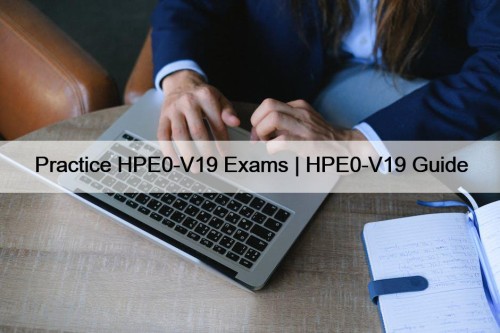Most Popular
 HPE0-V19 Exam Fees & Authorized HPE0-V19 Pdf
HPE0-V19 Exam Fees & Authorized HPE0-V19 Pdf
It is known to us that to pass the HPE0-V19 ...
 Practice HPE0-V19 Exams | HPE0-V19 Guide
Practice HPE0-V19 Exams | HPE0-V19 Guide
If you are preparing for the exam in order to ...
 100% Pass Quiz 2025 The Best 8011: Latest Credit and Counterparty Manager (CCRM) Certificate Exam Exam Duration
100% Pass Quiz 2025 The Best 8011: Latest Credit and Counterparty Manager (CCRM) Certificate Exam Exam Duration
Authentic Solutions Of The PRMIA 8011 Exam Questions. Consider sitting ...



100% Pass Quiz 2025 The Best 8011: Latest Credit and Counterparty Manager (CCRM) Certificate Exam Exam Duration

Authentic Solutions Of The PRMIA 8011 Exam Questions. Consider sitting for an Credit and Counterparty Manager (CCRM) Certificate Exam and discovering that the practice materials you've been using are incorrect and useless. The technical staff at Exam4Docs has gone through the PRMIA certification process and knows the need to be realistic and exact. Hundreds of professionals worldwide examine and test every PRMIA 8011 Practice Exam regularly.
PRMIA 8011 CCRM Certificate is recognized globally as a benchmark for excellence in credit and counterparty risk management. It is a valuable credential for professionals who work in the financial services industry, including risk managers, credit analysts, portfolio managers, and traders. By earning this certification, individuals demonstrate their commitment to professional development and their expertise in credit and counterparty risk management.
>> Latest 8011 Exam Duration <<
Free PDF Quiz 2025 Reliable PRMIA 8011: Latest Credit and Counterparty Manager (CCRM) Certificate Exam Exam Duration
There are a lot of experts and professors in our company. All 8011 study torrent of our company are designed by these excellent experts and professors in different area. We can make sure that our PRMIA 8011 test torrent has a higher quality than other study materials. The aim of our design is to improving your learning and helping you gains your Credit and Counterparty Manager (CCRM) Certificate Exam 8011 Certification in the shortest time. If you long to gain the certification, our Credit and Counterparty Manager (CCRM) Certificate Exam guide torrent will be your best choice.
PRMIA 8011: Credit and Counterparty Manager (CCRM) certificate is a globally recognized certification that identifies professionals as experts in managing and monitoring credit and counterparty risks. This program is designed to provide a comprehensive understanding of the best practices and principles for managing credit risk and counterparty risk in financial institutions. It covers various risk management techniques, focusing on realistic scenarios in the context of counterparty credit risk management.
PRMIA Credit and Counterparty Manager (CCRM) Certificate Exam Sample Questions (Q59-Q64):
NEW QUESTION # 59
Which of the following is not an example of a risk concentration?
- A. Material amounts of treasury obligations held as collateral provided by a single counterparty
- B. Location of a portfolio's assets in a single country but spread across different industries
- C. Origination of a large number of SIVs with exposures to the same asset class, where the SIVs are separate legal entities without recourse to the originator
- D. Large combined positions in assets affected by different risk factors that are highly correlated
Answer: A
Explanation:
Choice 'd' represents a risk concentration due to excessive exposure to a single country, even though spread across different industries as the risk factors (economy, exchange rate, interest rate, political risk etc) are the same for all companies in the country.
Choice 'a' represents a risk concentration because even though the risk factors are different, they are highly correlated and therefore effectively behave as one. These undetected correlations proved to be fatal to many financial institutions during the credit crisis.
Choice 'b' represents a risk concentration as was borne out by the recent credit crisis. Large banks had to take over the obligations of SIVs they had created, even though the SIVs were separate legal entities with no legally enforceable recourse to the originating bank. This had to be done for moral and reputational reasons, and banks had to absorb the losses of these supposedly separate vehicles.
Choice 'c' does not represent a risk concentration, in fact it is not a risk at all because it refers to collateral held, even though the collateral may have been provided by the same counterparty. In this case the risk is to the party providing the collateral (in case the party holding the collateral rehypothecates or sells the collateral and is unable to return it).
Therefore Choice 'c' is the correct answer.
The BCBS document on stress testing provides a very nice articulation of risk concentration, and the relevant text from that document is produced verbatim here: [Risk concentration] may arise along different dimensions: single name concentrations; concentrations in regions or industries; concentrations in single risk factors; concentrations that are based on correlated risk factors that reflect subtler or more situation-specific factors, such as previously undetected correlations betweenmarket and credit risks, as well as between those risks and liquidity risk; concentrations in indirect exposures via posted collateral or hedge positions; concentrations in off-balance sheet exposure, contingent exposure, non-contractual obligations due to reputational reasons.
NEW QUESTION # 60
Which of the following correctly describes survivorship bias:
- A. Survivorship bias is the positive tail risk that ensures survival over the long run
- B. Survivorship bias refers to prudent and conservative risk management
- C. Survivorship bias is the negative skew in returns data resulting from credits that have survived despite a high probability of default
- D. Survivorship bias is the tendency for failed companies, markets or investments to be excluded from performance data.
Answer: D
Explanation:
Survivorship bias is the tendency for failed companies, funds, investments and even entire markets (eg Russian stock market returns after the Communist revolution) to be excluded from performance studies because they no longer exist. Survivorship bias results in past results looking better than they actually were as data points relating to failures are not included.
A risk manager needs to be aware of survivorship bias when basing risk analysis on historical data and should question if failures (eg failed funds, delisted companies etc) have been included in the data he or she is relying upon.
NEW QUESTION # 61
If the 1-day VaR of a portfolio is $25m, what is the 10-day VaR for the portfolio?
- A. Cannot be determined without the confidence level being specified
- B. $7.906m
$79.06m - C. $250m
Answer: C
Explanation:
The 10-day VaR is = $25m x SQRT(10) = $79.06m. Choice 'b' is the correct answer.
NEW QUESTION # 62
A corporate bond has a cumulative probability of default equal to 20% in the first year, and 45% in the second year. What is the monthly marginal probability of default for the bond in the second year, conditional on there being no default in the first year?
- A. 15.00%
- B. 2.60%
- C. 3.07%
- D. 31.25%
Answer: C
Explanation:
Note that marginal probabilities of default are the probabilities for default for a given period, conditional on survival till the end of the previous period. Cumulative probabilities of default are probabilities of default by a point in time, regardless of when the default occurs. If the marginal probabilities of default for periods 1, 2... n are p1, p2...pn, then cumulative probability of default can be calculated as Cn = 1 - (1 - p1)(1-p2)...(1-pn).
For this question, we can calculate the marginal probability of default for year 2 by solving the equation [1 - (1 - 20%)(1 - P2) = 45%] for P2. Solving, we get the marginal probability of default during year 2 as 31.25%.
Since this is the annual marginal probability of default, we will need to convert it to a monthly number, which we can do by solving the following equation where M1 is the monthly marginal probability of default.
1 - 31.25% = (1 - M1)
Tags: Latest 8011 Exam Duration, 8011 Valid Test Preparation, 8011 Reliable Dumps Book, Valid 8011 Test Vce, Best 8011 Practice